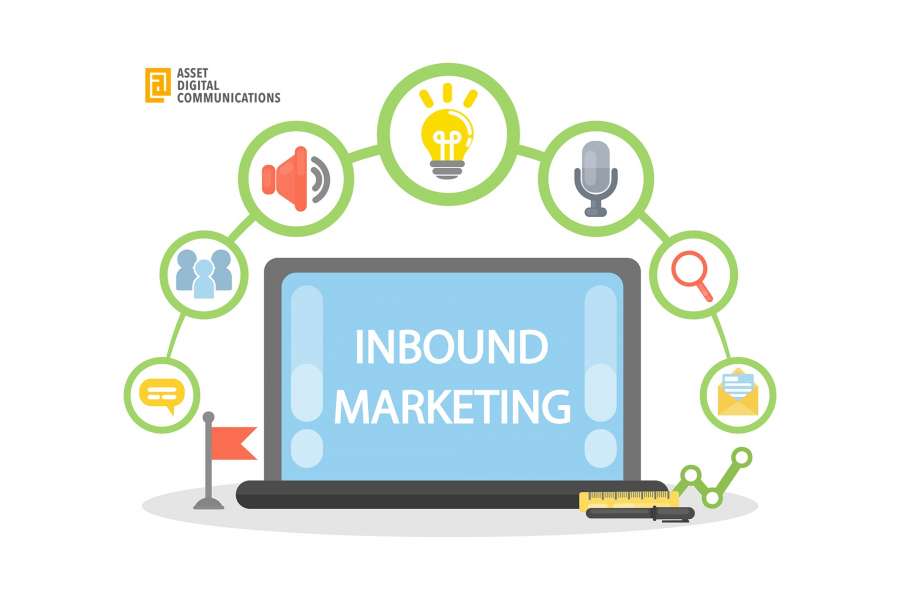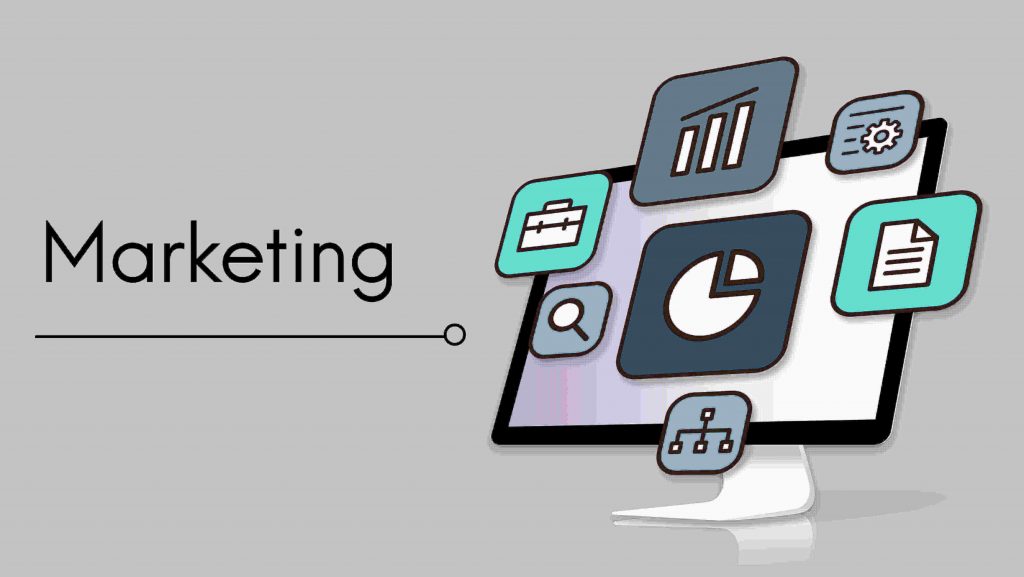Explore B2B Inbound Marketing Advice for the Post-Pandemic World
A B2B inbound marketing agency will tell you that there is an opportunity in every crisis.
While most companies have hit pause or dialed back their marketing budgets, there is merit in being the signal in the noise right now.
Your customers are searching for authentic and meaningful communication from their brands in a time of crisis. Don’t invest foolishly, but do continue to invest!
Moreover, in a time of shrinking budgets, inbound marketing can be one of the most efficient methods to attract, engage and nurture leads for your business.
Let’s see how you can make the most of inbound marketing in the post-pandemic world.
Inbound vs Outbound Marketing
Inbound marketing is a strategy in which you drive traffic to your website, rather than outwardly advertising your products or services.
The general idea is that bringing potential customers to your website will help them become familiar with your brand, and what solutions you have to offer. Ideally, you’ll make a strong first impression, which in turn, makes it more likely that they will return to you when they’re ready to make a purchase.
Some common strategies for inbound marketing include search engine optimization (SEO), content marketing, often in the form of blog posts, and an email list.
Outbound marketing, by contrast, refers to more traditional forms of paid media, including TV ads, billboards, magazine ads, radio commercials, and more.
A B2B Inbound Marketing Agency’s Advice for the Post Pandemic World
At the heart of the inbound marketing methodology lies the move from a funnel approach to a flywheel cycle. A virtuous cycle that keeps on feeding itself by creating content that attracts, engages, and converts your customers and prospects.
Revisit your inbound marketing strategy, most likely you are still working within a framework that is suited for the pre-pandemic boom not the new reality of a post-pandemic world. How do you adapt to this new reality?
We encourage our clients to review their marketing calendars. Does it need to be updated?
In the absence of physical events, start embracing not only webinars but also virtual conferences. Be mindful of the virtual event fatigue your customers are facing and come up with innovative ways to engage them in a conversation with you.
Mine your intent data to find clues about your customer’s purchase activity and how it has changed. Are some types of content and products now more popular than before?
For example, video and collaboration tools might be more interesting to your customers than more general technology purchases.
Invest more in content for the products that are selling the most right now. Check your context and messaging and monitor your customer’s response to your new messaging.
Learn More How Expert Can Help You With This
Start with SMART Goals for Your Inbound Strategy
Setting goals for your inbound marketing campaign is critical. However, goals like “make more money this year,” or “sell more products” aren’t very helpful. Your goal needs to be SMART. SMART is a simple acronym to help you remember to keep your goals Specific, Measurable, Attainable, Relevant, and Timely.
Specific
You’ll need to get into the who, what, when, where, and how for your goals. Who in the company will be responsible for this? A specific person or team? What, specifically, is your goal? The more detailed you can make it, the better. When should you reach your goal? Where, if anywhere specific do you need to reach your goal? How do you plan on going about reaching it?
Measurable
If your initial goal was something simple, like “attract customers,” what, exactly, do you hope to accomplish? How many customers must you attract in order for you to feel you’ve reached your goal? Gaining one new customer technically meets this goal, but would you feel like you accomplished anything?
With an actual number attached to your goal, you have a specific end in sight.
Attainable
Let’s imagine you did around $100,000 in business last year. You can’t reasonably expect that you meet a goal of $1 million in your next business year. It’s just not realistically attainable! Instead, think about what you’ve accomplished in the past, consider what, specifically, you would need to achieve more, and then set an attainable goal based on that.
Relevant
One of the keys to crafting SMART goals is to make sure they are relevant to your overall business goals and objectives. For example, if your business is B2B, but you’re setting goals for marketing products to consumers, the goals may not be right for your business.
Another example might be if your goal is to double your revenue, but you don’t have the ability or a plan to double your team to make up for the extra work.
Timely
It’s important to give yourself a deadline. When is this goal due? How long should it reasonably take to reach it?
In the end, your goals must make sense for your business, have specifics for completion and to measure success, and have a deadline.
Create a Buyer Persona
As a business owner and an expert in your field, you’ve probably already got a pretty good idea of who your audience is. But if you haven’t taken the time to dive a bit deeper and flesh out a full buyer persona you won’t know their exact demographics, pain points, and the reason they’re shopping in the first place.
In a nutshell, a buyer persona is a fictitious person that represents your overall target audience. You might even develop several buyer personas if your business is multi-faceted.
Getting started on your buyer persona is the perfect way to really get to know who, exactly, you should be targeting in your digital marketing campaigns.
Bring Order to the Chaos With Social Media
During a time of physical distancing and lockdowns, digital communication has come up as the next best option to communicate. People are increasingly going to social media to interact with brands, ask questions or even enquire about general information (like their working hours).
Carefully think about the ‘why’ before posting on social media. Your customers do not have the appetite for frivolous posts, but they are interested in learning about how you can help them during these unprecedented times.
For key updates, pin those posts on Twitter and Facebook, and Highlights on Instagram. Promote content that is contextual and relevant to your audience. For example, a post about how you plan to serve your customers while they work from home is more important and will help put to rest any fears they may have about your service delivery.
Take the help of a Candian B2B inbound marketing agency to fine-tune your social media strategy during such a complex time.
Email Marketing During a Pandemic
Emails are one of the most impactful tools in the inbound marketing methodology. More emails are being sent now than before, which also increases the noise out there. How do you cut through the noise?
Prioritize empathy and tone sensitivity. Ensure your email messaging is appropriate at this time. Check your automatic mailers. Most of the time they might have information that is no longer relevant in the current situation. Align those messages to what your readers are going through at this moment.
There has never been a better time to personalize at the audience segment level. Each of your target segments is experiencing the pandemic differently and it is important to connect with that. Ask how you can help during this pandemic. Do this by sending out a survey to understand the challenges they are facing and how you can help overcome those.
Most importantly, conquest sales messaging will no longer work. Pivot to a brand-building one that explains how your products and services can help your customers survive during this pandemic. Educate your customers first instead of just pushing your products to them.
Educate, Entertain and Engage With Video
Yes, video is still the king when it comes to the most preferred form of content. But videos don’t just help with awareness. According to Optionmonster, video marketers get 66% more qualified leads per year! This means it is a bona fide lead-generation channel.
You’ll have to tweak your video marketing strategy if you want to stay relevant though. Talk to your customers by creating videos that show that you care. A simple ‘we are there for you’ video can go a long way in building customer loyalty in a time of crisis.
Similarly, a ‘discounted rates/offers’ video can show that you are in sync with the financial problems that your customers are facing.
You are missing out on a huge opportunity if you are still not creating videos. YouTube alone has 2 billion users as of April 2020 making it the second most used social media platform. There is a huge opportunity cost if you choose not to leverage the reach that video channels have to offer.
As a final note, due to the dynamic and fluid nature of the current situation, marketers need to keep tabs on how customers are responding in real-time. This is not ‘business as usual,’ but it is also not the time to hit pause on your marketing. If anything, be smart about your investments in the right channels, people, and resources.
Are you looking for someone to help guide you through the ins and outs of B2B inbound marketing? Call Asset Digital Communications today to book your free consultation!
Suggested Reads For You




